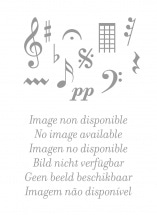 | Sscarlatti A. - E Perche Non Seguite O Pastorelle - Countertenor/alto, Two Violins, Two Flutes/recor Alessandro Scarlatti?s influence was immense both through his pupils (such as Hasse and Geminiani) and his son, Domenico Scarlatti (born in 1685 and later also his pupil). Alessandro (1660-1725) is of the generation that precedes Bach and Handel (who were both born in the same year as his son Domenico). His musical career was focused in Rome and Naples. He is regarded as the Father of Neapolitan opera since he was the key figure in the development of the operatic elements in particular the arias, recitatives and in the use of the orchestra. He composed 115 operas and many other works ? including oratorios, Masses, madrigals, concerti grossi and chamber cantatas (of which he wrote about 600). For countertenor/alto (g-d''), 2 violins, 2 flutes/recorders and bc The present cantata comes from the collection of the Abbato Santini (1778-1861) which is in the care of the Diözesanbibliothek Münster. This cantata , very confidently ascribed at the head of the first folio as ?Del Signe Alesso Scarlatti?, and titled ?Cantata /con Violini, e Flauti?, is the first in the manuscript MÜs HS 3975. It is followed by the cantatas Mentre Clori la bella and Augellin, vago e canoro, well accepted as by Alessandro Scarlatti, both of which are available in the Green Man Press edition. It is curious therefore that this cantata, E perche non seguite o Pastorelle, is not listed in Grove among the cantatas of Alessandro Scarlatti, nor as a work of doubtful attribution, and the work is listed neither in Hanley nor in Rostirolla . This attractive cantata for a countertenor or alto (the ?persona? is a love-lorn man), follows the usual pattern of alternating recitative and aria, but is introduced with a generous sinfonia in three sections, slow-fast-slow. The final aria has as a ritornello a graceful instrumental minuet. The scoring for two violins and two flauti is unusual: only a few of the cantatas by Scarlatti have this many obbligato instruments, and none have this combination. This instrumentation provides plenty of rich and lively material. While it is usual to be able to take flauti to mean recorders, the second flauto part has one bar in the sinfonia, and four in the first aria, which are too low for the treble recorder. However the second aria?s flauto solo part is typical writing for the treble recorder. Perhaps the second instrument could be a tenor recorder.
Editeur : Green Man Press
DESOLE, CET ARTICLE N'EST PLUS DISPONIBLE
| |

 (VENDEUR EUROPEEN)
(VENDEUR EUROPEEN)